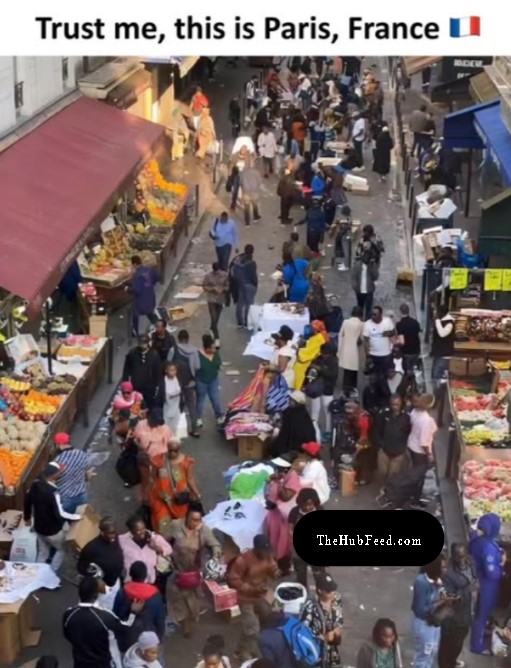Paris, the capital of France, is renowned for its diversity, art, fashion, and cultural landmarks. But behind the city’s glamorous image lies a rich and varied demographic, including a significant and growing Black population. Estimates suggest that approximately 20-30% of Paris’s population is of African or Caribbean descent, though official figures are difficult to come by due to France’s policy of not collecting data on race or ethnicity.

Historical Roots of the Black Population in Paris
The presence of Black people in Paris has deep historical roots. French colonialism in Africa and the Caribbean played a pivotal role in bringing people of African descent to France. During the 19th and early 20th centuries, many Black people from the French colonies, particularly from West Africa, the Caribbean, and the Indian Ocean, moved to Paris for work, education, and to seek better opportunities. This migration continued through the mid-20th century as France decolonized its overseas territories.
Following World War II, France experienced significant labor shortages, which prompted the government to recruit workers from its former colonies, especially from North and West Africa. Many of these workers, often referred to as “migrants” or “immigrés,” came to Paris to fill roles in industries like construction, manufacturing, and transportation. Over time, these workers brought their families, and many chose to settle in the city, further solidifying the Black community’s presence.
The African and Caribbean Diaspora in Paris
The majority of Black Parisians have roots in sub-Saharan Africa and the Caribbean, particularly from former French colonies. People from countries like Senegal, Ivory Coast, Mali, Guinea, Chad, and Congo have made up a large portion of the city’s African population. Additionally, there is a strong presence of people from the French Caribbean islands of Martinique, Guadeloupe, and Haiti.
These communities have contributed significantly to Paris’s cultural and social fabric. French-speaking African and Caribbean migrants brought with them rich cultural traditions, music, food, religion, and art that have heavily influenced the city. For instance, the vibrant neighborhoods of La Goutte d’Or in the 18th arrondissement and Château Rouge have become centers of African and Afro-Caribbean culture, full of markets, restaurants, music, and festivals that celebrate this heritage.
Reasons Behind the Large Black Population
Several factors have contributed to the size and growth of the Black community in Paris:
Colonial History: As mentioned, France’s colonial past in Africa and the Caribbean is a primary reason for the presence of Black people in Paris. French-speaking colonies served as a source of labor and migration to the metropole, particularly in the post-war period.
Labor Migration: After World War II, France faced an economic boom and needed workers for its growing industries. The government encouraged labor migration from its colonies in Africa and the Caribbean, which helped establish a significant Black population in cities like Paris.
Immigration Laws: France has historically had relatively open immigration policies for citizens of former colonies, making it easier for Black people from these regions to come to the country for work or to reunite with family members.
Education and Opportunities: Paris, being a cultural and economic hub, offers educational opportunities and economic prospects that attract many Black people from African and Caribbean countries. Higher education institutions like Sciences Po and La Sorbonne draw students from across the world, including from Africa, seeking world-class education and better career prospects.
Cultural and Political Movements: Over the decades, Black communities in Paris have formed strong cultural, social, and political movements, advocating for racial equality, social justice, and the preservation of African and Caribbean heritage. Prominent figures such as Aimé Césaire, Frantz Fanon, and Leopold Senghor have helped establish a political and intellectual tradition that supports the Black community in France.
The Influence of the Black Community
Today, the Black community in Paris is a powerful force, influencing many aspects of life, from fashion and music to politics and art. Hip-hop and Afrobeat music are hugely popular across Paris, with Black artists playing an influential role in shaping the country’s music scene. French rap often reflects the experiences of Black people in Paris, addressing issues such as racism, identity, and socio-economic inequality.
In addition, the Black Lives Matter movement has gained traction in Paris, with many people in the Black community joining protests and advocating for racial equality. The city’s museums and galleries also showcase the contributions of Black artists, and the annual Fête de la Musique and Carnaval Tropical celebrate the Afro-Caribbean culture that is central to Parisian life.
Challenges Faced by Black Parisians
Despite their contributions, the Black community in Paris faces challenges, particularly in terms of discrimination, economic inequality, and police violence. Issues like housing discrimination, unequal access to jobs, and racism in the police force remain significant problems.
In recent years, tensions between the Black community and law enforcement have been exacerbated by cases of police brutality and racial profiling. Protests and movements, such as those inspired by George Floyd’s death in the United States, have led to greater conversations around race and inequality in Paris.
Conclusion
The Black population in Paris is an integral part of the city’s identity, with deep historical ties, cultural contributions, and political influence. From the colonial era to modern-day migration patterns, the reasons behind the growth of the Black community in Paris are multifaceted. As the community continues to grow and shape the city’s culture, it also faces challenges that demand attention from both the French government and society. However, the resilience and contributions of Black Parisians have made Paris a richer, more vibrant place, reflecting the diversity that has defined the city for centuries.
